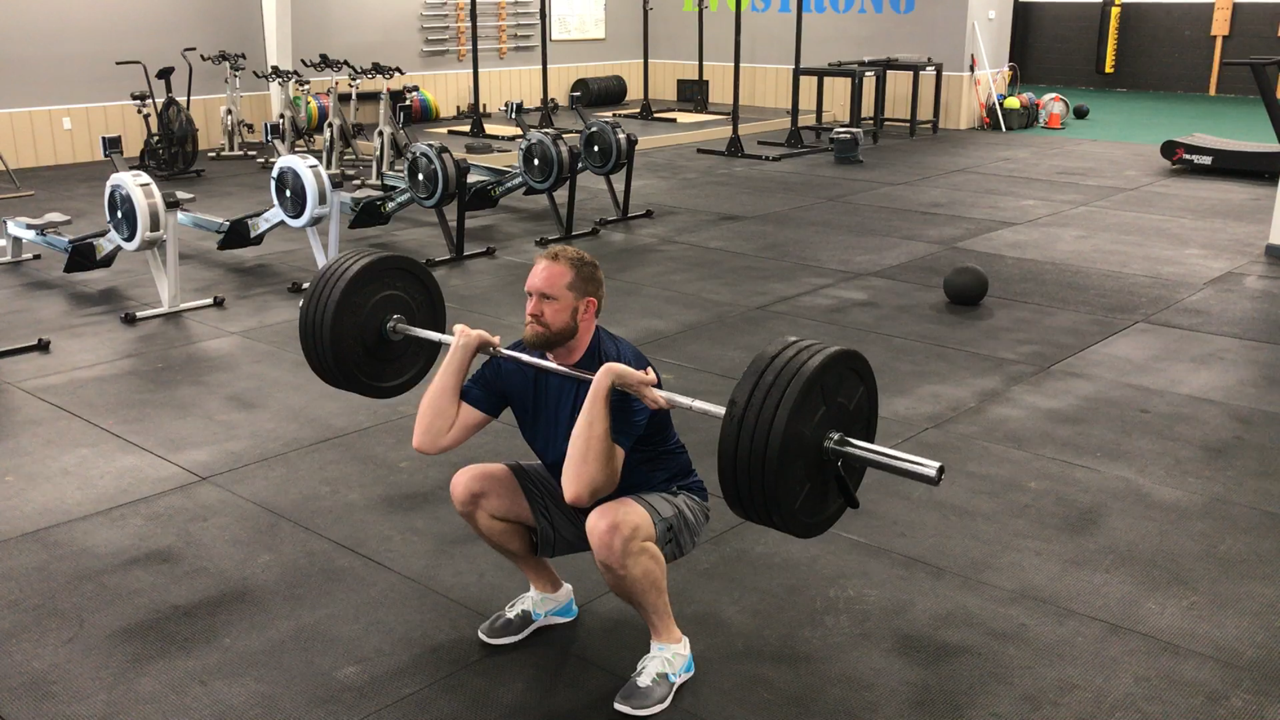In the medical field, we have a phrase for uncommon problems that aren’t widely known. We say that “while you may not be seeing it, it’s seeing you.” Because you don’t know what you are missing if you don’t know to look for it. And T4 Syndrome is exactly that type of problem. T4 Syndrome is a surprisingly common cause of pain in the back and shoulder radiating to the arms and neck. And as a shoulder specialist, I see it quite often no that I know what to look for.
It can often cause sharp pains when breathing and numbness all the way down to the hands. And I see a couple of cases each month in my office. As a matter of fact, I’ve had T4 Syndrome myself, and so has my wife But I never learned about it during my combined ten years of medical school and orthopedic surgery training! Once I learned about the diagnosis, I found that it was a relatively frequent problem for many people. In many cases, it’s a nagging issue that doesn’t require a trip to the doctor. Are you one of them? If so, I’ll show you how you can help yourself.
Who gets T4 syndrome?
I’ve seen T4 syndrome in people from all walks of life, but the common connection seems to be frequent repetitive lifting with the upper body. Around my area, that includes people that work in the many shipping and receiving warehouses for stores and online distribution centers.
But T4 syndrome is also a frequent complaint among the people that I work out and lift with. Doing a ton of pushups, pullups, and overhead press can easily trigger T4 Syndrome. I said before that I see roughly one case of T4 syndrome in my office each month. But that doesn’t count the others that regularly get a little barbell-side “house call” while working out!
What are the symptoms of T4 syndrome?
The most common complaint of T4 syndrome is “shoulder pain.” But I put that in quotes because the most painful spot is located in between the shoulder blade and spine in the middle of your back. Right in that area that’s so hard to reach on your own. See the image below for a better idea of the central location of pain in T4 syndrome.
That pain can be so severe that it actually causes difficulty breathing, because of the sharp pain when inhaling too deeply. That can make it difficult just to live your life, and will totally knock you out of the gym.
There are other symptoms of T4 Syndrome as well. The list of symptoms includes:
- Pain between the shoulder blades
- Sharp pain between the shoulderblades when breathing
- Pain shooting from the back of the shoulder and all the way to the hand
- Numbness in the hand, especially when sleeping or working out
- Clumsiness in the affected hand(s)
- Radiation of pain into the neck
- Headaches
- Affected Hand(s) feel swollen, hot, or cold
What Is T4 Syndrome?
In all honesty, we aren’t exactly sure what causes T4 Syndrome. But we know that hypomobility of the thoracic spine plays a big role. In regular English, that means T4 syndrome is caused by a stiff back and “stuck” joints between the spine and ribs. In particular, the 4th Thoracic Vertebrae, which is where we get the name. We know that this stiffness is linked to the symptoms because manipulation and mobilization of the thoracic spine can give immediate, if temporary, relief of the symptoms.
But we don’t know exactly how a stiff spine and ribs cause this broad range of symptoms. Specifically, there is no identified nerve that travels directly from the 4th thoracic level and into the arm or neck. But there are autonomic nerves that start in the upper back and then travel along with the major blood vessels into the neck, shoulder, and arm.
Autonomic nerves are part of the subconscious systems that regulate your breathing, blood pressure, and other vital functions. They don’t provide any sensation themselves BUT there is a network of sensory fibers that run with them to your organs and muscles. So the symptoms of T4 Syndrome probably come from compression of those organ-sensing fibers as they follow the autonomic nerves out of the spine. Since these nerves vary widely in their normal pathways, they could easily cause the range of symptoms seen in T4 Syndrome.
How Is T4 Syndrome Diagnosed?
T4 syndrome is diagnosed through a combination of physical exam and the group of symptoms described above. While we normally perform X-rays to check for other diagnoses (like fractures, tumors, or scoliosis) there are no specific signs of T4 syndrome that can be seen by X-ray. Likewise, MRI and Nerve Conduction Studies do not show any abnormalities. A physician has to simply know what they are looking for and be able to identify the painful area near the spine on exam.
T4 Syndrome Recovery Time
Some of the treatments we talk about can actually provide immediate relief of the symptoms from T4 Syndrome. The hard part can be getting the symptoms to stay away. Depending on your daily activities and line of work, you may have to have regular treatments and continue to work on strengthening for several months to get the problem to stay away.

In this interview with Scott Dolly, we discuss the new declaration of fascia as it’s own organ and tell you exactly what fascia is. We talk about how fascia gets messed up, what symptoms it can cause, and how we can fix them!
How Do We Treat T4 Syndrome?
First the good news: T4 Syndrome doesn’t require surgery. And the bad news: there is no surgical treatment for it. You just have to work through this with therapy. But there are many people that can help you treat and prevent T4 syndrome.
Physical therapists and chiropractors can manipulate the thoracic spine rapidly to relieve pain. And Massage Therapy can be effective at relieving the spastic muscles constricting motion. If you have osteoporosis or osteopenia, you may want to stick with stretching and myofascial release techniques instead of firm manual manipulation.
Myofascial release techniques like IASTM, Dry Needling, and EStim can also relieve a lot of these symptoms. New research indicates our fascia is full of deep pain-sensing fibers. And myofascial release techniques can be very helpful in relieving this kind of pain. This may be through the actual mobilization of the tissue, or it may simply be due to desensitization. But either way, I can tell you from personal experience and from the experience of my patients, it sure seems to work.
You can do some of these myofascial release techniques at home. But once you have treated the acute symptoms of T4 syndrome, you have to start working on prevention. Otherwise, it can come right back!
Preventing T4 Syndrome
While manipulation of the spine and ribs can relieve a lot of the pain from T4 Syndrome, you won’t get permanent relief without treating the underlying causes. Bad posture, weak or imbalanced muscles, poor flexibility, and plain old bad mechanics can play a huge role in the onset of T4 syndrome. To keep it from coming back, you need to work on all of these issues.
Spine Mobility Exercises
Thoracic mobility work is essential for the prevention of T4 Syndrome. Because the lifestyle of most of my fellow gym-rats really promotes spinal stiffness. How many of you go straight from a morning workout to an hour-long commute? Or maybe you go from the gym at lunch to a job hunched over a keyboard? Sound familiar?
Working out hard followed by a long period of inactivity is what I call the “Anti-Mobility Workout.” It’s a perfect recipe to allow those fatigued muscles to tighten up and clamp down. So spine mobility is something you should work on throughout the day to combat it. Get up and move or stretch in your seat every hour or so. Here’s one of my favorite thoracic spine stretches:

Thoracic Teapots
Just like tipping a teapot, this stretches your spine in rotation, extension, and lateral bending to free up the thoracic spine and ribs. Make sure you work as far as you can in both directions, turning left and right. (This video only shows half the maneuver due to space restrictions)
Scapular Strengthening Exercises
Fatigue of the muscles in the back and around the shoulder blade is a major reason why these areas get tight, to begin with. So if you want to keep T4 Syndrome from coming back, you need to strengthen those muscles. These are pulling muscles, so activities like rowing will help build endurance and prevent fatigue while sitting all day.
You can also focus on the muscles of the upper back and shoulder with a set of movements known as Blackburns. The video below will show you how:

Blackburns
These movements help strengthen the muscles that control your shoulder blade. That can help prevent shoulder injuries while also treating T4 syndrome and improving posture. Be sure to keep the shoulder blades together and try to keep your hands from touching the ground.
Move Well To Prevent Recurrence
In addition to strengthening and stretching the muscles around your shoulder blade, you need to practice good posture and movement patterns. If you spend all day hunched over your desk, your pain will come right back. Keep an upright spine, squeeze your shoulders back, and open your chest to prevent thoracic spine strain and you’ll have fewer T4 Syndrome symptoms.
You might recognize those positional cues: Your coach or personal trainer probably tells you to do the same thing when you are lifting. That’s because retracted shoulder blades, an open chest, and a straight spine prevent acute injuries while lifting and chronic injuries during your daily life. So your lifting coach or personal trainer has probably been giving you those cues every time you get set up to front squat, clean, or deadlift.
Differential Diagnosis
There could certainly be other causes for these kinds of symptoms. Some of them are more or less likely depending on your age, health, and other medical problems. You should have a doctor rule out these other problems before assuming you have T4 Syndrome:
- Occipital Neuralgia
- Thoracic Outlet Syndrome
- Fractures
- Aortic Aneurysms
- Cubital Tunnel Syndrome
- Carpal Tunnel Syndrome
- Reynaud’s Phenomenon
- Cervical Radiculopathy
- Pain originating from the organs
- Fibromyalgia
Where to Get Help
As always, if you are in Northern Virginia, West Virginia, or Maryland feel free to make an appointment with me at my office through this link: Bone and Joint Specialists of Winchester

Dr. James Larson is an orthopedic surgeon specializing in sports medicine and arthroscopic surgery. He also holds a CF-L1 certificate and is a Certified BFR Specialist. He supports weight training and high-intensity exercise throughout the lifespan. He started LSO to keep more people moving better, longer.

